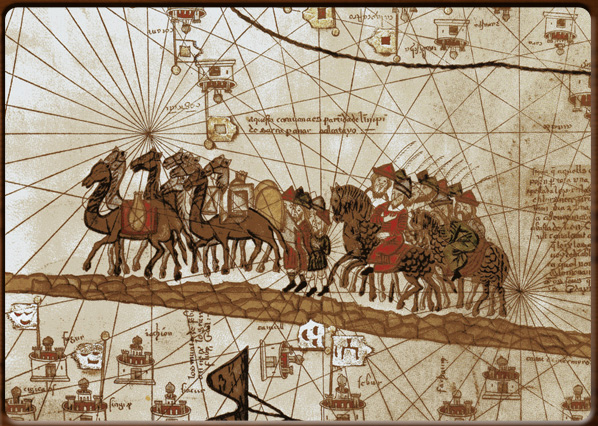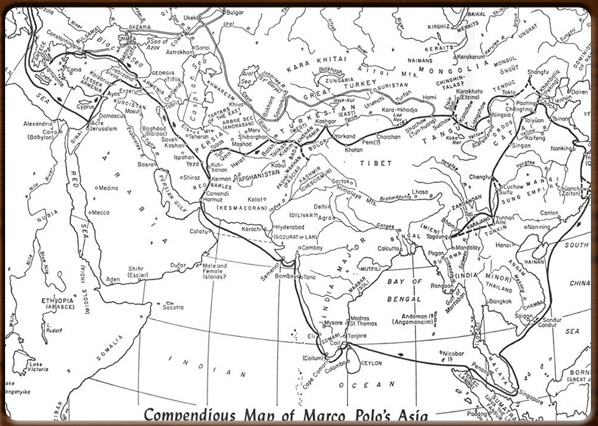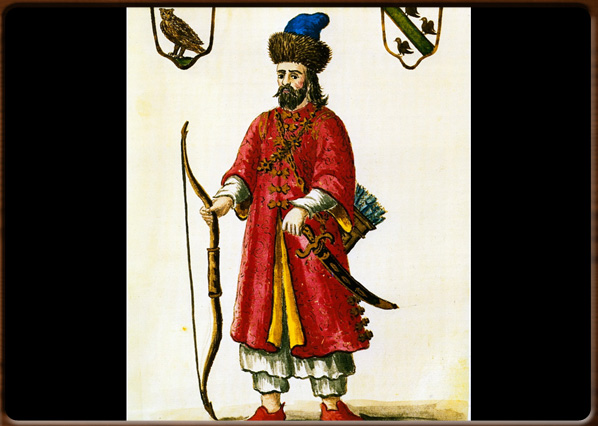
Marco Polo carovan, unknown french authors, 1375.

The Silk Road.

Marco Polo in tatar costume (1294).



No video
A few courageous merchants went beyond the limit of the mude of the East, continuing their journeys along the caravan trails in central Asia, India and China.
One of the first was the Venetian traveller, Marco Polo, who crossed Asia to reach China and the court of the Emperor Kublai Khan, where he then lived for 17 years in the late 1200s.
He described his adventures in his book, the Milione, a work that for many years was considered the authority on the Far East. However, several Christian missionaries had preceded him. All the routes that were eventually laid down by the caravans became known as the Silk Road in the 1800s: a network of paths by land, river and sea crossing any area of about 8,000 km, allowing the caravans to cross central Asia, connecting China with Asia Minor and the Mediterranean via the Middle East.
The term “Silk Road” derives from the fact that the East, and China in particular, was Europe’s biggest supplier of silk. This precious product was fundamental for Western society at the time, where flourishing factories used it as their raw material for fine clothes (ladies and lords, kings and queens, knights, judges and bishops).
The East also supplied precious and semi-precious stones, mostly from India, Persia and the island of Ceylon, plus rock crystals from Afghanistan and lapis lazuli from the Caucasus. Dye products and alum, used to fix colours in fabrics, came from the Far East and were in great demand in the Western textile industry.
The most important goods in trade with the East, however, were spices , most coming from the Far East, India (especially the port of Goa), the island of Ceylon, Indonesia and China. These were carried on the backs of camels across the expanses of Persia and Turkestan, to the ports on the Black Sea or further south, along the Mediterranean coast in the Middle East.
1100 - 1200 - - rev. 0.1.6